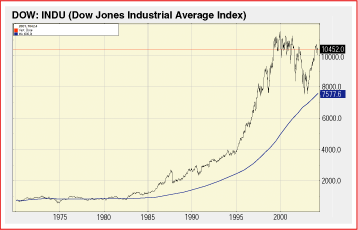Models As Guidelines
Noise And Time Series
by Clem Chambers
Does signal processing help in determining future price movements? After reading this, you may be tempted to explore further.
It's an unhappy fact that thousands of people comb over market time series every single day. Whether they are drawing lines on paper, crunching numbers in Excel, or programming backtesters, they are all looking for the same thing: a way to make money trading using the historical record to predict the future.
According to the efficient market hypothesis, this of course is impossible. Fortunately, hypothesis means "theory," not an irrefutable truth. So we can all get back to the data and get on with our hypothesis -- that the past can indicate the future. We just have to figure out how.
NOT FOLLOWING THE CROWD
As anyone who has sifted through a box of old coins at a flea market will tell you, it is hard to find any gold ones, because hundreds of people have been there before you. This is the problem we all face in the way of trading ideas; the most obvious ideas are gone, preempted by others prepared or able to take a smaller return than we can or able to make the trade faster than we can.
However, I bought a couple of gold coins for mere pennies when I was a child, simply because I wasn't expecting to find a treasure. Untold people walked by the same opportunity but didn't see it because they were looking for something else or thinking in terms of rummaging around in the other box they thought was the place to find coins.

FIGURE 1: A SIMPLE REPRESENTATION OF A LONG-TERM SIGNAL. The 600-day moving average of the DJIA going back to 1970 appears to be a smoothed version of what is really going on. However, if you look closely at it, it's composed of many small movements.
This might seem pointless to you, but data error in a time series is common. If we use faulty data, running a backtest can convince us that we could have had a fantastic return on our trading system, when in fact no profit potential was there.
WHERE DO YOU START?
Even something like a stock chart that we study for hours is, in fact,
a somewhat inaccurate model of what has happened. It is actually impossible
to capture the complete picture of anything with any model at all. Instead,
a model gives us a picture or a generalization of what has gone on. We
are therefore free to look at time series any way we please if we think
that a model might give us any insight into what will happen next.
...Continued in the November issue of Technical Analysis of STOCKS & COMMODITIES
Excerpted from an article originally published in the November 2004 issue of Technical Analysis of STOCKS & COMMODITIES magazine. All rights reserved. © Copyright 2004, Technical Analysis, Inc.
Return to November 2004 Contents